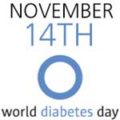The risk of type 2 diabetes is significantly increased if white rice is eaten regularly. The researchers from the Harvard School of Public Health look at previous studies and evidence of the association between eating white rice and the risk of type 2 diabetes.
The researchers analysed the results of four studies:
two in Asian countries (China and Japan) and
two in Western countries (USA and Australia).
All participants were diabetes free at study baseline. White rice is the predominant type of rice eaten worldwide and has high GI values. High GI diets are associated with an increased risk of developing type 2 diabetes.
High Glycemic index Food & Diabetes
The glycemic index, glycaemic index, or GI is a measure of the effects of carbohydrates in food on blood sugar levels. It estimates how much each gram of available carbohydrate (total carbohydrate minus fiber) in a food raises a person’s blood glucose level following consumption of the food, relative to consumption of glucose. Glucose has a glycemic index of 100, by definition, and other foods have a lower glycemic index.
Glycemic index is defined for each type of food, independent of the amount of food consumed. Glycemic load accounts for the amount of food consumed and is calculated in terms of glycemic index.
The average amount of rice eaten varies widely between Western and Asian countries, with the Chinese population eating an average of four portions a day while those in the Western world eat less than five portions a week.
A significant trend was found in both Asian and Western countries with a stronger association found amongst women than men. The results also show that the more white rice eaten, the higher the risk of type 2 diabetes: the authors estimate that the risk of type 2 diabetes is increased by 10% with each increased serving of white rice (assuming 158g per serving).
White rice has a lower content of nutrients than brown rice including fibre, magnesium and vitamins, some of which are associated with a lower risk of type 2 diabetes. The authors report, therefore, that a high consumption of white rice may lead to increased risk because of the low intake of these nutrients.
In conclusion, the authors state that “higher white rice intake is associated with a significantly elevated risk of type 2 diabetes”. This applies for both Asian and Western cultures, although due to findings suggesting that the more rice eaten the higher the risk, it is thought that Asian countries are at a higher risk. The authors recommend eating whole grains instead of refined carbohydrates such as white rice, which they hope will help slow down the global diabetes epidemic.
I feel more, bigger studies are needed to substantiate the research hypothesis that white rice increases the chances of getting type 2 diabetes. The study in BMJ again reminds us to reduce high GI food items in our meal. Please reduce following food itens from your diet : white bread, most white rices, corn flakes, extruded breakfast cereals, glucose, maltose, etc.










